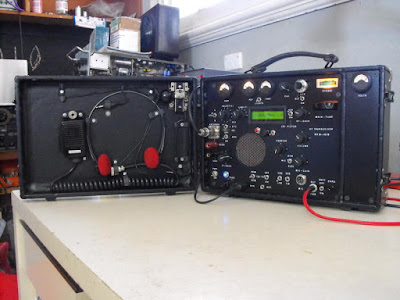SolderSmoke Podcast #179 is available:
22 August 2015
YESTERDAY MARKED 10 YEARS OF THE SOLDERSMOKE PODCAST
-- A clip: The first minutes of SolderSmoke #1
-- A trip down SolderSmoke memory lane.
-- The SolderSmoke lexicon -- words and phrases we use (a lot).
BENCH REPORT
-- Pete's antenna project.
-- Pete's new Blog: http://n6qw.blogspot.com
-- Bill's big amplifier problem fixed thanks to Allison KB1GMX.
-- Six digit freq readout with an Altoids case.
THE Si5351 PHASE NOISE CONTROVERSY
-- ALL oscillators make noise.
-- Keeping things in perspective: It is 100 db down!
-- Observations and tests from LA3PNA, NT7S, and K0WFS:
-- Try it, you'll like it! The benefits trying things on real rigs.
NEWS
Interviews on "QSO TODAY" with Eric 4Z1UG.
Horrible band conditions.
Looking at Saturn with telescope.
MAILBAG
Another recruit for the CBLA: Paul KA5WPL.
Ron G4GXO on Bell-Thorn and Eden9 SSB rigs.
Rupert G6HVY on Kon Tiki radio and Mr. Spock.
Mikele's Croation BITX rigs.
Dean AC9JQ's TIA.
Bryan KV4ZS will build an LBS receiver.
Dave Anderson give Pete good antenna advice.
Steve Smith moves in from the garage.
Pete has built 12 SSB transceivers. Intervention time?
Our book: "SolderSmoke -- Global Adventures in Wireless Electronics" http://soldersmoke.com/book.htm Our coffee mugs, T-Shirts, bumper stickers: http://www.cafepress.com/SolderSmoke Our Book Store: http://astore.amazon.com/contracross-20

































